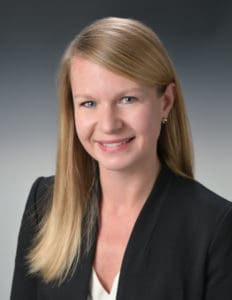 Written By: Kelly Shafer, CPA
Written By: Kelly Shafer, CPA
In March of 2022, the Financial Accounting Standards Board (FASB) issued a follow-up standard to ASU 2016-13 – Measurement of Credit Losses on Financial Instruments (CECL) to address recommendations from a post-implementation review of CECL. This new standard, ASU 2022-02 – Troubled Debt Restructurings and Vintage Disclosures, introduces concepts deemed useful to users of public company financial statements following the adoption of CECL.
The objectives of the standard are to:
- eliminate the accounting guidance for troubled debt restructurings (TDRs), requiring all modified loans to follow the same model
- enhance disclosures for certain loan refinancing and restructurings when a borrower is experiencing financial difficulty
- require public business entities to include vintage disclosures for current-period gross write-offs
Elimination of TDR Accounting
With ASU 2022-02, FASB changes how financial institutions recognize and measure loan modifications that previously met the definition of a TDR. Rather than applying the historical recognition and measurement guidance for TDRs, a modification to a loan with a troubled borrower is now accounted for as any other loan modification by applying the loan refinancing and restructuring guidance contained in ASC 310-20. The shift from an incurred loan loss model to CECL led FASB to determine that the designation of a loan modification as a TDR was unnecessarily complex and no longer provides valuable information to financial statement users. Since CECL requires that the allowance for credit losses be based on estimated lifetime expected losses at the origination of a loan, any credit losses from loans modified as TDRs are already incorporated into the allowance.
When applying the guidance of ASC 310-20 to a loan modification, the primary distinction is the determination of whether a refinancing or restructuring represents a new loan or the continuation of an existing loan. Refinancing or restructuring results in a new loan if:
- the terms of the new loan (including the interest rate) are at least as favorable to the lender as the terms with other borrowers with similar collection risk that are not refinancing or restructuring their loans, and
- the modification to the terms are more than minor
The restructuring is treated as a new loan if both requirements are met. In this case, unamortized net fees or costs from the original loan and any prepayment penalties are recognized in interest income at the time the new loan is granted. A new effective interest rate for the loan is also established at this time. Suppose the restructuring is deemed a continuation of an existing loan (i.e., both requirements are not met). In that case, the fees/costs are carried forward as part of the modified loan, and any new fees/costs associated with the modification are added to the amortized cost basis of the loan.
FASB’s objective with ASU 2022-02 was to provide consistency in the guidance for loan modifications made to both troubled and non-troubled borrowers. As such, institutions can no longer consider reasonably expected extensions, renewals, and modifications when measuring the allowance for a modified loan. However, an institution need not reverse the impact of any TDR loans from its historical data used in the CECL model.
New Disclosure Requirements
While the accounting for TDRs has arguably been simplified by the standard, ASU 2022-02 brings with it a handful of new disclosures that replace traditional TDR disclosures. These disclosures apply to modifications of loans to borrowers experiencing financial difficulty, the definition of which has not changed from previous guidance. Institutions are now required to disclose information related to four specific types of loan modifications:
- Principal forgiveness
- Interest rate reduction
- Other-than-insignificant payment delays
- Term extensions
For modifications that fall within one or more of these categories, the disclosure must be made of the type and financial effects of the modification and the performance of the modified loan in the twelve months following modification. Additionally, for loans that had a payment default during the current period and had modifications to the contractual cash flows in the twelve months prior to default, the type of contractual change and amount of the default must be disclosed. Qualitative disclosures about how modifications and defaults factor into determining the allowance for credit losses are also required.
Institutions may see a change in the mix of loans subject to disclosure under the new standard compared to their historical TDR disclosures since disclosure is no longer based on whether a concession was provided to a borrower experiencing financial difficulty. With the elimination of TDRs from the accounting guidance, the concept of a concession has also been eliminated. Instead, institutions will need to evaluate whether a modification fell within one of the above four categories to qualify for disclosure.
For example, an interest rate reduction that was still a market interest rate would not have been considered a concession prior to ASU 2022-02 and would not have required TDR disclosures. Under ASU 2022-02, any interest rate reduction to a borrower experiencing financial difficulty would need to be disclosed.
Vintage Disclosures
The standard provides new guidance on vintage disclosures that is applicable to public business entities only. Public business entities are required to disclose current period gross write-offs by year of origination. The disclosure is applied on a prospective basis beginning in the year of adoption and will eventually build to a five-year history of gross write-offs over time.
ASU 2022-02 applies to all financial institutions that have adopted CECL. Institutions may elect to apply the guidance on TDR recognition and measurement using either a modified retrospective transition method or prospectively. The TDR and vintage disclosure guidance should be adopted prospectively.
If you would like more information on how this new guidance applies to your financial institution, contact Kelly Shafer at (304) 343-4126 or kshafer@suttlecpas.com.
